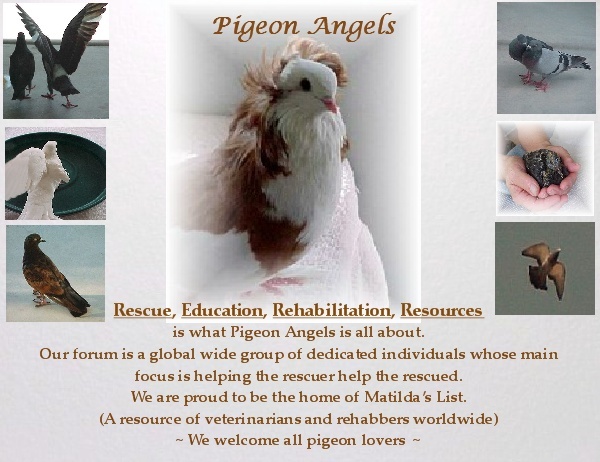About Blood Feathers
by Theresa Jordan
http://www.quakerville.com/qic/qbfeathe.asp What is a blood feather?
A blood feather is an actively growing feather that still has a blood supply running to it. When a bird molts out a feather, a new one is forming in the follicle. This live tissue has a central artery and vein to supply nutrients to the growing feather.
How do I identify a blood feather?
A blood feather has a thicker quill (or calamus) than than a mature feather, and the calamus is softer and bluish-purple in color. There is a sheath that encloses the developing feather. Also, blood feathers are shorter than mature feathers, since they have not grown to their full lengths.
Where are blood feathers located?
Blood feather are located on different areas of a bird's body, depending on what molting stage he is in. (Molting is the process by which birds shed feathers and grow new ones.) Birds usually molt in a particular pattern, so that in the wild they are always able to fly. Birds may molt, one, two, or three times per year, depending on the species. The pattern of molting follows an orderly progression. In a complete molt, the sequence is usually first the inner primaries, then the secondaries and tail feathers, and lastly body feathers. Matched pairs of feathers are usually shed at the same time so that flight is still possible. Baby birds growing their first set of feathers have all their blood feathers at one time, all over their bodies.
When is a blood feather dangerous?
The danger with blood feathers occurs if a feather is cut, broken, or bent. Because the feather has an artery and vein, a damaged blood feather will bleed, often profusely. Once a broken blood feather begins bleeding, the simplest solution is to gently remove the damaged feather by pulling it.
How do I pull a blood feather?
To remove a blood feather, use a pair of needle-nosed pliers or a pair of hemostats. Gently grasp the feather near the base of the calamus, (close to the body) and using steady pressure, pull the feather straight out in the direction in which it is growing. This procedure usually requires two people, one to hold the bird and the wing (assuming the broken blood feather is on the wing--a common spot), and one to pull out the offending feather.
Broken blood feathers may stop bleeding if left untouched, but as soon as they are bumped, bleeding usually commences. The only permanent solution is to gently, but firmly, pull the feather from its follicle and apply pressure to the follicle area with tissue, gauze or Quick-Stop™ until the bleeding stops.
Once a blood feather is pulled, the feather-growth process begins all over again, and a new blood feather will soom replace the pulled one. Once a feather reaches matuity, the blood supply degenerates, the pulp dries up and the calamus develops into a hard shaft.
When you clip your bird's wings, make sure you examine each quill (or calamus), and identify each shaft as not being a blood feather before you cut. If you do this each time, you will minimize your chances of having a broken blood feather, although it still seems to happen to all birds at one time or another.


